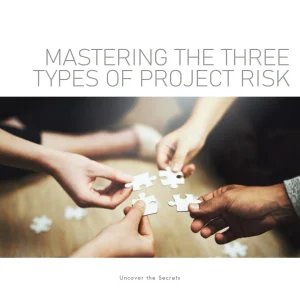I. Introduction
Hey there, fellow project managers and team leaders! We all know that communication is the lifeblood of any successful project. In fact, I’d say that it’s the secret sauce that brings everything together, ensuring that goals are met, stakeholders are satisfied, and team members remain motivated. Today, I want to share with you the five cornerstones of project communication processes that I’ve discovered and used in my own career, which have made a world of difference in managing projects effectively.
But first, let’s take a moment to appreciate the sheer importance of communication in project management. It’s not just about sending emails or attending meetings; it’s about creating a shared understanding, aligning expectations, and fostering a sense of trust among all project participants. When communication is effective, problems are identified and resolved faster, collaboration is smoother, and ultimately, the project is more likely to succeed.
So, without further ado, let’s dive into the five cornerstones of project communication processes that will help you elevate your communication game and lead your projects to success. Throughout this post, I’ll provide insights, tips, and real-life examples to illustrate how these cornerstones can be implemented in your projects. Are you ready? Let’s go!
II. Cornerstone 1: Communication Planning
A wise person once said, “Failing to plan is planning to fail,” and when it comes to project communication, I couldn’t agree more. Before you kick off any project, it’s essential to have a solid communication plan in place. Trust me, it’ll save you a lot of headaches down the line. Let’s break down this first cornerstone into four key steps:
A. Identifying stakeholders and their communication needs
Start by listing all the stakeholders involved in your project – from team members and clients to suppliers and upper management. Once you have your list, think about their specific communication needs. For example, your client might want a weekly progress update, while your team members may need daily check-ins. Don’t be afraid to have conversations with your stakeholders to understand their preferences and expectations better.
B. Establishing communication channels and methods
Now that you know your stakeholders’ needs, it’s time to decide on the most appropriate communication channels and methods. For example, you might use email for status updates, video conferences for brainstorming sessions, and instant messaging for quick questions. The key here is to ensure that everyone has access to these channels and feels comfortable using them.
C. Setting communication frequency and timing
One size doesn’t fit all when it comes to communication frequency and timing. Some stakeholders may require daily updates, while others might only need to be looped in once a month. Consider each stakeholder’s role and the nature of their involvement in the project, and schedule communications accordingly. Be mindful of time zones and work schedules as well to avoid sending important messages when stakeholders are unavailable.
D. Creating a communication plan
Finally, it’s time to document your communication strategy in a comprehensive plan. This plan should outline the stakeholders, their communication needs, the channels and methods you’ll use, and the frequency and timing of communications. Having a written plan ensures that everyone is on the same page and serves as a handy reference throughout the project. Plus, it’s a great way to show your stakeholders that you’re proactive and organized!
And there you have it – the first cornerstone of project communication processes. By taking the time to develop a well-thought-out communication plan, you’ll set the foundation for clear and effective communication, which is vital for any successful project. Stay tuned for the next section, where we’ll delve into the art of information distribution!
III. Cornerstone 2: Information Distribution
Great job on creating a communication plan! Now, let’s move on to the next cornerstone of project communication processes: information distribution. This is where the rubber meets the road, and your carefully crafted plan comes to life. Let’s explore the four key elements of effective information distribution:
A. Implementing the communication plan
You’ve spent time and effort creating your communication plan, and now it’s time to put it into action. Make sure that everyone involved in the project is aware of the plan and understands their role in it. This might involve sharing the plan with team members, conducting a kick-off meeting, or hosting a workshop to explain the communication process.
B. Ensuring information reaches intended recipients
It’s not enough to simply send out information—you need to make sure it’s reaching the right people. Double-check that you have the correct contact details for each stakeholder and that they’re receiving your communications. Keep an eye out for bounced emails, missed calls, or other signs that your messages aren’t getting through.
C. Selecting appropriate communication tools and techniques
The tools and techniques you use to distribute information can make or break your communication efforts. For instance, if you’re sharing a detailed project update, an email might be more suitable than a quick text message. On the other hand, if you need a fast response to a burning question, a phone call might be more effective than waiting for an email reply. The key is to match the communication medium to the message and the audience.
D. Overcoming barriers to effective information distribution
Even with the best-laid plans, obstacles can arise when distributing information. Technical issues, language barriers, and information overload can all hinder effective communication. To overcome these challenges, be proactive in troubleshooting problems, seek feedback from stakeholders, and be prepared to adapt your communication strategy as needed.
By mastering information distribution, you’ll ensure that everyone involved in your project stays informed, engaged, and aligned with project objectives. In the next section, we’ll dive into performance reporting and how it can help you keep your project on track. Stay tuned, and happy distributing!
IV. Cornerstone 3: Performance Reporting
You’ve got your communication plan in place and your information distribution game on point. Now, let’s dive into the third cornerstone of project communication processes: performance reporting. This is where you keep stakeholders up-to-date on project progress and make necessary adjustments along the way. Here’s how to excel in performance reporting:
A. Monitoring and controlling project progress
First and foremost, you need to keep a close eye on your project’s progress. Regularly track performance metrics, like budget, schedule, and scope, to ensure you’re meeting project objectives. Remember that performance reporting isn’t just about sharing the good news—transparency about challenges and setbacks is equally important.
B. Regularly updating stakeholders on project status
Consistent updates are crucial to keeping stakeholders informed and managing their expectations. Based on your communication plan, provide regular status updates, even if there’s no groundbreaking news to share. Consistency helps build trust and keeps everyone engaged in the project.
C. Providing clear and concise performance reports
When it comes to performance reports, clarity is king. Use simple language, visual aids, and easy-to-understand metrics to convey project progress. Avoid jargon and industry-specific terms that might confuse your audience. Remember, the goal is to ensure everyone understands how the project is progressing and what steps are being taken to overcome challenges.
D. Adapting communication strategies based on performance feedback
Performance reporting is a two-way street. Encourage feedback from stakeholders and be open to their suggestions for improvement. If stakeholders express concerns or confusion about the project, take it as an opportunity to refine your communication approach. This might involve adjusting the frequency of updates, changing the format of your reports, or providing additional context to address specific concerns.
By excelling in performance reporting, you’ll not only keep stakeholders in the loop but also foster an environment of trust and transparency. This will empower your team to tackle challenges head-on and drive your project towards success. In the next section, we’ll discuss issue management and how effective communication can help you navigate the bumps in the road. Keep reading, and let’s keep that project on track!
V. Cornerstone 4: Issue Management
You’re doing great so far! We’ve covered communication planning, information distribution, and performance reporting. Now it’s time to tackle the fourth cornerstone of project communication processes: issue management. No project is without its share of challenges, but how you communicate and address these issues can make all the difference. Let’s explore the four key steps to effective issue management:
A. Identifying and tracking project issues
First things first: you need to be aware of the issues that arise during your project. This involves keeping an open line of communication with your team and stakeholders, encouraging them to report any concerns or roadblocks. Make sure to document these issues in a centralized tracking system, like a shared spreadsheet or project management tool, so that nothing slips through the cracks.
B. Communicating issues to relevant stakeholders
Once an issue has been identified, it’s crucial to communicate it to the appropriate stakeholders. This might include your team members, clients, or upper management, depending on the nature of the issue. Be honest and transparent about the situation, clearly explaining the problem, its impact on the project, and the proposed solution.
C. Resolving issues and updating the communication plan
Now that you’ve communicated the issue, it’s time to roll up your sleeves and tackle it head-on. Work closely with your team and stakeholders to find a resolution, whether it’s adjusting the project timeline, reallocating resources, or modifying project deliverables. Remember to update your communication plan as needed to reflect any changes resulting from the issue resolution.
D. Encouraging open and transparent communication for issue resolution
Throughout the issue management process, strive to maintain an atmosphere of open and transparent communication. This means being approachable, listening actively, and providing regular updates on the progress of issue resolution. By fostering a collaborative and supportive environment, you’ll empower your team to find creative solutions and navigate challenges more effectively.
Mastering issue management is crucial to keeping your project on track and maintaining stakeholder confidence. In the final section, we’ll explore how lessons learned and knowledge sharing can contribute to continuous improvement and long-term project success. Keep reading, and let’s bring it all together!
VI. Cornerstone 5: Lessons Learned and Knowledge Sharing
Congratulations! You’ve made it to the final cornerstone of project communication processes. By now, you’ve laid a solid foundation with communication planning, information distribution, performance reporting, and issue management. In this last section, we’ll discuss the importance of lessons learned and knowledge sharing, which can help your team grow and improve for future projects. Let’s dive in!
A. Documenting project experiences and insights
As your project progresses, you’ll inevitably encounter challenges, successes, and moments of learning. Make it a habit to document these experiences and insights, either in a project journal, team meetings, or through regular debriefs. This practice will not only help you reflect on your project’s journey but also create a valuable resource for future reference.
B. Sharing lessons learned with the project team and stakeholders
Once you’ve documented your lessons learned, don’t keep them to yourself! Share your insights with your project team and stakeholders, creating a culture of continuous learning and improvement. This might involve holding a project wrap-up meeting, where everyone can discuss their experiences, or creating a shared repository of lessons learned for easy access.
C. Updating organizational knowledge bases
Your project’s lessons learned can also benefit the wider organization. Take the time to update any relevant knowledge bases, such as best practices, templates, or training materials, with your newfound insights. This will ensure that the entire organization can learn from your project and build upon your successes.
D. Applying lessons learned to future projects
Last but not least, make sure to carry your lessons learned into your future projects. Apply the insights you’ve gained to enhance your communication strategies, streamline processes, and tackle challenges more effectively. By continuously learning and growing, you’ll become a more skilled project manager and leader.
And there you have it—the five cornerstones of project communication processes! By implementing these practices in your projects, you’ll not only improve communication and collaboration but also set the stage for long-term success. As you continue on your project management journey, remember the power of effective communication and the role it plays in bringing your team and stakeholders together. Happy project managing!
VII. Conclusion
Wow, what a journey we’ve been on together! We’ve explored the ins and outs of the five cornerstones of project communication processes, from communication planning and information distribution to performance reporting, issue management, and lessons learned and knowledge sharing. By now, you should be well-equipped to tackle your next project with confidence, knowing that you have a strong communication strategy in place.
As you put these cornerstones into practice, always remember that effective communication is at the heart of every successful project. It’s what keeps your team connected, your stakeholders informed, and your project on track. By fostering a culture of open and transparent communication, you’ll not only create a more collaborative and enjoyable work environment but also set the stage for long-term success.
As a fellow project manager, I encourage you to keep learning, growing, and refining your communication skills. After all, our projects are only as strong as the relationships we build and the conversations we have. Thank you for joining me on this journey, and I wish you the very best in all your future projects. Keep communicating, and happy project managing!
To find out how Artificial Intelligence is changing the Project Management landscape, you have enjoy reading this article https://www.shaunstoltz.com/did-artificial-intelligence-just-change-everything-about-project-management/
Find out more about Shaun Stoltz https://www.shaunstoltz.com/about/
This post was written by an AI and reviewed/edited by a human.



